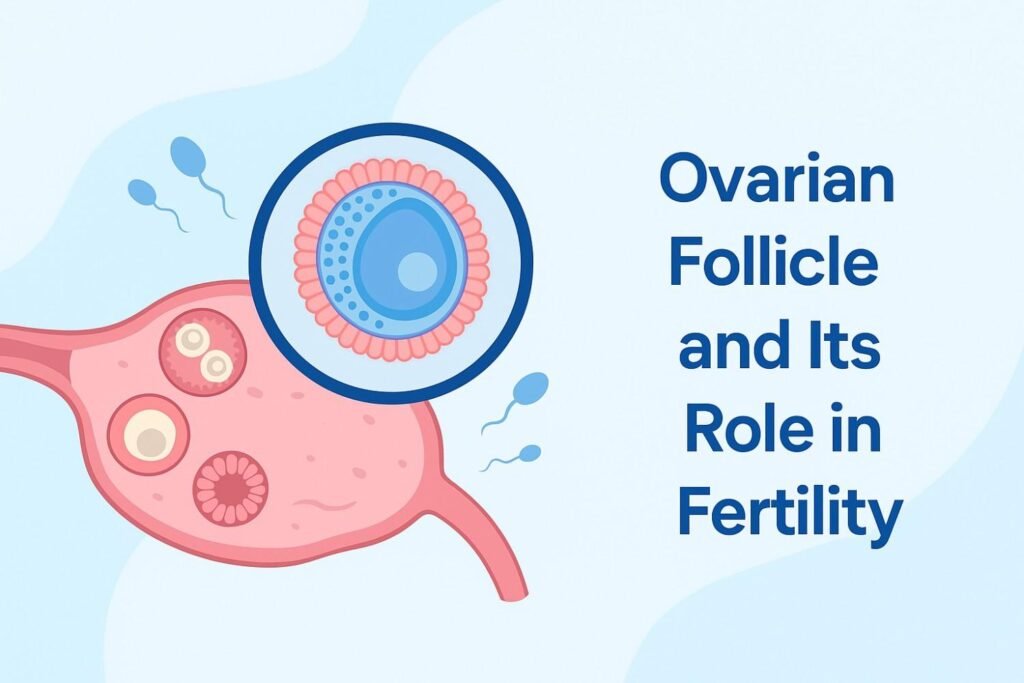Fertility is a complex journey, and one of its most crucial elements is the ovarian follicle. These tiny sacs, found in a woman’s ovaries, play an essential role in ovulation and overall reproductive health. In this blog, we’ll explore what ovarian follicles are, their function in the menstrual cycle, and how they impact a woman’s ability to conceive.

🧬 What Are Ovarian Follicles?
Ovarian follicles are small fluid-filled sacs located within a woman’s ovaries. Each follicle contains an immature egg (oocyte). Women are born with about one to two million follicles, but only around 400 to 500 will mature and be released through ovulation during their reproductive years.
🔄 How Do Ovarian Follicles Function?
Each menstrual cycle, the body stimulates a group of follicles through hormones like Follicle Stimulating Hormone (FSH). Out of this group, usually only one becomes dominant and reaches full maturity. This mature follicle eventually releases an egg during ovulation, typically around the 14th day of a 28-day cycle.
The released egg travels down the fallopian tube where it may meet sperm and become fertilized. If fertilization does not occur, the egg dissolves, and the menstrual cycle continues.
🧪 Why Follicle Count Matters for Fertility
The number and quality of a woman’s ovarian follicles can significantly affect her fertility. A higher antral follicle count (AFC) usually suggests better ovarian reserve, meaning a higher potential for producing eggs. This is particularly important for women undergoing fertility treatments like IVF.
Doctors often evaluate ovarian reserve using:
- Transvaginal ultrasound to count antral follicles
- AMH (Anti-Müllerian Hormone) blood tests
- FSH and estradiol levels on day 2 or 3 of the cycle
🧠 Factors That Can Affect Follicular Health
Several lifestyle and medical factors influence the health and development of ovarian follicles:
- Age: Follicle quantity and quality decline with age, especially after 35.
- Hormonal imbalances: Conditions like PCOS can lead to multiple underdeveloped follicles.
- Stress and poor diet: These can negatively affect hormonal balance and egg quality.
- Environmental toxins and smoking may damage follicles and reduce fertility.
🌱 Tips to Support Healthy Follicle Development
If you’re trying to conceive or preparing for fertility treatment, consider these steps:
✅ Eat a nutrient-rich diet (folate, omega-3s, antioxidants)
✅ Maintain a healthy weight
✅ Reduce alcohol, smoking, and exposure to toxins
✅ Manage stress through yoga, meditation, or counseling
✅ Consider supplements like CoQ10, Vitamin D, and Myo-inositol (under a doctor’s guidance)
🩺 When to Seek Medical Advice
If you’ve been trying to conceive for over 12 months (or 6 months if you’re over 35), consult a fertility specialist. They can assess your follicle count, hormone levels, and overall reproductive health to guide your next steps.